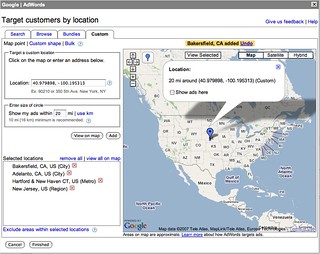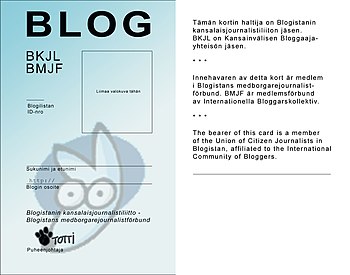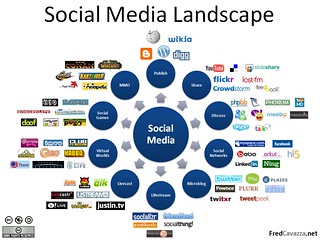 |
| Courtesy of www.cnbc.com |
Every business today is trying to take advantage of the leverage that the internet provides. This process is made more complicated because the internet is a multi-media platform. Not only can it provide a media-rich experience on every page, it can also provide access to many forms of marketing that even includes analogs of their traditional counterparts like TV, Radio and print. Better still, it also provides superior tracking and analytical feedback to make sure your marketing is actually working!
Birth of the Internet
 |
| Courtesy of www.cnbc.com |
Then Came Broadband
Then came the development of broadband and suddenly it was a whole new ballgame. With that ballgame came an entirely new set of rules. Instead of relying almost exclusively on text, many sites began experimenting with podcasts and video. With the advent of YouTube, where anyone can post and host videos galore, multimedia went from being an anomaly to being practically a requirement.
| broadband (Photo credit: Sean MacEntee) |
| New Google AdWords Geo Targeting Interface (Photo credit: rustybrick) |
2. The State of SEO Today – When I hear people conversion about search engine optimization, I ask them to define the term SEO. Before the turn of the century everything a search engine needed to determine who ranked best resided exclusively on the website. Today, only twenty five percent of the criteria used for ranking purposes is contained on-site. The remainder consists of everything from blogs and social networks to videos and podcasts.
The other thing that has changed in a big way is the acumen of search engine spiders. Not only can the spiders read, they can understand how well your website, blogs and social posts are constructed. They are also programmed to look at how often you post as well as how much engagement this content generates. The only things they can’t understand are your images and videos. This is why it is so important to make sure your ALT tags are filled in and the text and tags used to wrap your videos is complete.
| Citizen journalism by Pinseri-blog credit: Wikipedia) |
| Social Media Landscape (Photo credit: fredcavazza) |
| YouTube for television (beta) (Photo credit: francescominciotti) |
YouTube is much more than just a video portal. It is a search engine, it is a social network and it is a free web TV station that can place your videos on page 1 of Google. How cool is that? Yet most businesses are not taking advantage of this free marketing powerhouse. By taking advantage of it, I don’t mean having one or two videos on YouTube. What I am talking about is having dozens or even hundreds of videos on YouTube. Better yet, why not start a channel that focuses on your business? Don’t think that’s practical? Think again. We have shown all kinds of businesses from chiropractors to plumbers how 2-minute micro casts can be used to generate a following and turn their owners into rock stars. Shooting 2-4 short videos each and every month isn't all that complicated or costly. All it takes is a little imagination to turn the world’s largest superstation into a business asset that’s hard to beat.
| Reputation management graphic that breaks down the elements of reputation management and how they fit together. (Photo credit: Wikipedia) |
 |
| Example of search listing showing a 5 star rating |
One of the things we use to promote our business as well as those of our clients is to ask your best customers if they wouldn't mind telling the public what they think of your services on video. By shooting a 2-3 minute interview and then cutting this down to 60-90 seconds not only will you have a powerful endorsement of your business, but while they are there you can then have them submit a positive review on Google+ that will go a long way toward helping you prove once and for all that you are the man or woman for the job.
 7. This is Not Your Daddy's PR – Press Releases have been around for a long time. Today, internet press releases are much more effective at promoting your company via the World Wide Web. In the old days you would type up the press release and then mail or fax it to as many media locations that you had contacts for. Today however, there are many aggregation companies that specialize in digital press releases. They have access to hundreds, if not thousands of media outlet sites.
7. This is Not Your Daddy's PR – Press Releases have been around for a long time. Today, internet press releases are much more effective at promoting your company via the World Wide Web. In the old days you would type up the press release and then mail or fax it to as many media locations that you had contacts for. Today however, there are many aggregation companies that specialize in digital press releases. They have access to hundreds, if not thousands of media outlet sites.One click of a mouse and your press release can be sent to either highly targeted media companies or you can opt to do mass broadcast to as many outlets as you can afford. Press releases have also changed radically as well. Before, press releases could only included text information and maybe a picture or two. Today your press release can include slide shows, pictures, videos, podcast, social links and links to your website or eCommerce store. Press releases also provide ranking effects and show up in all search engines list as well.
| Google AdWords Optimization - MetroAtlantaMarketing |
9. Who Can You Trust to Call? - Obviously creating and distributing everything from daily social posts to weekly blogs and monthly videos takes time. And time is something of which no business owner or manager has enough. So outsourcing some or all of the above mentioned tasks is the path of least resistance for many businesses. That being said, you need to be very careful who you allow to promote your business online. While there are a number of legitimate digital marketing agencies, there are also thousands of shortcut artists that can do more harm than good.
 In past blogs, we have written about Black Hat tactics that can put your website between a rock and a hard place. It isn't at all unusual for a search engine to de-list or even black ball anyone caught using black hat techniques. While it would take more than a blog to cover them all, the biggest red flag to watch out for is anyone who claims they can get your site listed organically with Google or any other major search engine within 30 days or less. Depending upon the competition involved with any keyword or phrase it can take anywhere from four to six months or more to produce enough compelling content to leverage page 1 on any of the major search engines. However, the results can be well worth the effort.
In past blogs, we have written about Black Hat tactics that can put your website between a rock and a hard place. It isn't at all unusual for a search engine to de-list or even black ball anyone caught using black hat techniques. While it would take more than a blog to cover them all, the biggest red flag to watch out for is anyone who claims they can get your site listed organically with Google or any other major search engine within 30 days or less. Depending upon the competition involved with any keyword or phrase it can take anywhere from four to six months or more to produce enough compelling content to leverage page 1 on any of the major search engines. However, the results can be well worth the effort.
In this article I have covered how to leverage the internet to market your business. It includes discussions on how advertising has changed from centred on conventional media to one that is internet centric. I have provided information that includes how you can use the different internet venues to leverage your advertising and marketing to grow your business. Included are discussions on the leverage provided by Geo-Targeting, SEO, Blogging, Social Media, YouTube, Reputation Management and Digital Press Releases. I also provide tips on what to watch out for when selecting a digital marketing agency.
If you like this article, you can find more by typing “advertising” or "Internet" in the search box at the top left of this blog.
If you would like a free copy of our book, "Internet Marketing Tips for the 21st Century," please fill in the form below and we will send you this free eBook. Your information is always keep private and never sold.

When he isn't surfing the web, Carl is Working the Web to Win, which is both a digital marketing agency in Jacksonville, Florida and a weekly online radio show on BlogTalkRadio.
 |
| Free eBook |
If you would like a free copy of our book, "Internet Marketing Tips for the 21st Century," please fill in the form below and we will send you this free eBook. Your information is always keep private and never sold.
When he isn't surfing the web, Carl is Working the Web to Win, which is both a digital marketing agency in Jacksonville, Florida and a weekly online radio show on BlogTalkRadio.
















The web won't work for you unless you wok the web.
ReplyDeleteNo wonder these guys won an award from the "Jacksonville Business Journal" last year. They truly know their stuff!
ReplyDeleteIt's amazing what I learn from following this blog and radio/YouTube show. As soon as I've the time, I'm going to check out their new book, too.
ReplyDeleteGreat information! The problem is that social media marketing is easy. That's why everyone is trying to do it themselves but because of time the constraints of actually running a business they don't have the time to do everything correctly. That's what I love about you guys, you save me time and money by doing all this for me so I can focus on running a profitable business that can work without me.
ReplyDeletewow, so many parts to manage to make internet marketing successful. It's best to hire someone that knows what they are doing!
ReplyDeleteGood review. I wish more companies with Web sites would read this because they are missing opportunities and leaving so much money on the table.
ReplyDelete